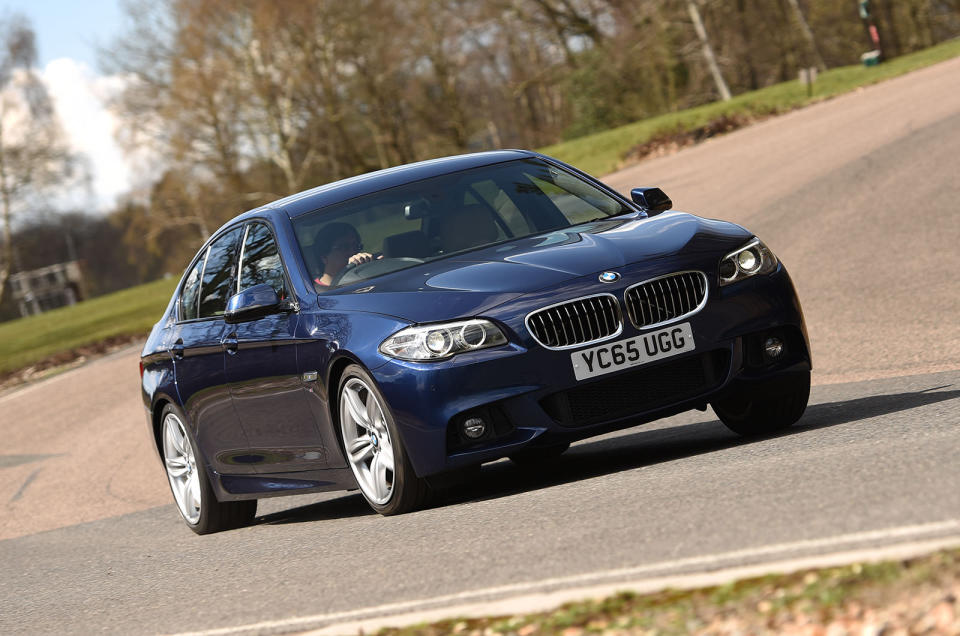Used BMW 5 Series 2010-2017 review

The first BMW 5 Series was launched more than 50 years ago, so by the time this sixth-generation F10 saloon version of 2010-17 landed, Munich had the recipe just about right.
We liked this car for its performance and economy, quality cabin and refinement, but less so for its bland styling, below-par suspension and expensive options.
Even so, it sold well to ambitious executives, with the result that today the classifieds are stuffed with F10s at prices starting from £3000 for an early 520d with a starship mileage, rising to £19,000 for a late 535d with around 45,000 miles – not that diesel is the only choice.
The petrols didn’t sell anything like as well as the tax-efficient diesels, but there’s a wide selection of options ranging from 2.0-litre turbo fours and 3.0-litre sixes to the 4.4-litre V8 in the 550i (the V8 M5 is covered in a separate guide). Our testers were particularly enamoured by the 528i: its 2.0-litre turbocharged four-pot produces 242bhp, and the car can sprint from 0-62mph in 6.2sec.
Back to the diesels, and for good reason the undisputed best-seller was the 520d. It was great value new, powerful, refined (unless pushed too hard) and very economical. The version from 2014 with twin turbos (look for TwinPower Turbo on the engine cover) is the best.
There is a lower-powered 518d, but if you can afford it buy the 520d. Next up the range is the 530d, which does 0-62mph in just 5.8sec. The 535d blitzes it in 5.3sec, although we were more impressed by its real-world responsiveness.
From mid-2013 all diesels became Euro 6-compliant. This was the year of the facelift, the 5 Series gaining some styling tweaks and, more significantly, bi-xenon headlights and improvements to the stop/start system, electronic handbrake, driver assistance systems and the automatic transmission.
Talking of which, the eight-speed automatic was an option on most engines, but we found the standard manual gearbox to be pleasant enough: it’s light but positive. Other options included Active Steer (it feels artificial), rear-wheel steering and active anti-roll bars: all expensive then and not worth a premium now.
Instead, it’s worth seeking out an F10 with adaptive dampers, which, especially when combined with smaller wheels, take the ride and handling up to a new level.
The model shares its platform with the 7 Series so, despite having a shorter wheelbase than that car, the cabin is roomy, especially in the rear. It’s beautifully finished, too, and the car has lots of standard equipment.
For example, entry-level SE trim has dual-zone climate control, a 6.5in touchscreen infotainment system, leather seats and parking sensors. Luxury, the next one up, adds the BMW Professional Multimedia system and M Sport trim, powered front sports seats, M Sport alloys, sports suspension and a bodykit.
Strangely, for a car from the makers of the ‘ultimate driving machine’, the F10’s driving position is spoiled by the pedals being offset to the right. It’s a cross on an otherwise reasonably clean sheet.
True, you have to be careful to get the suspension and wheel combination right and be sure to pick the right engine for your needs and your wallet, but that’s what test drives were invented for.
]]>

 Yahoo Autos
Yahoo Autos 